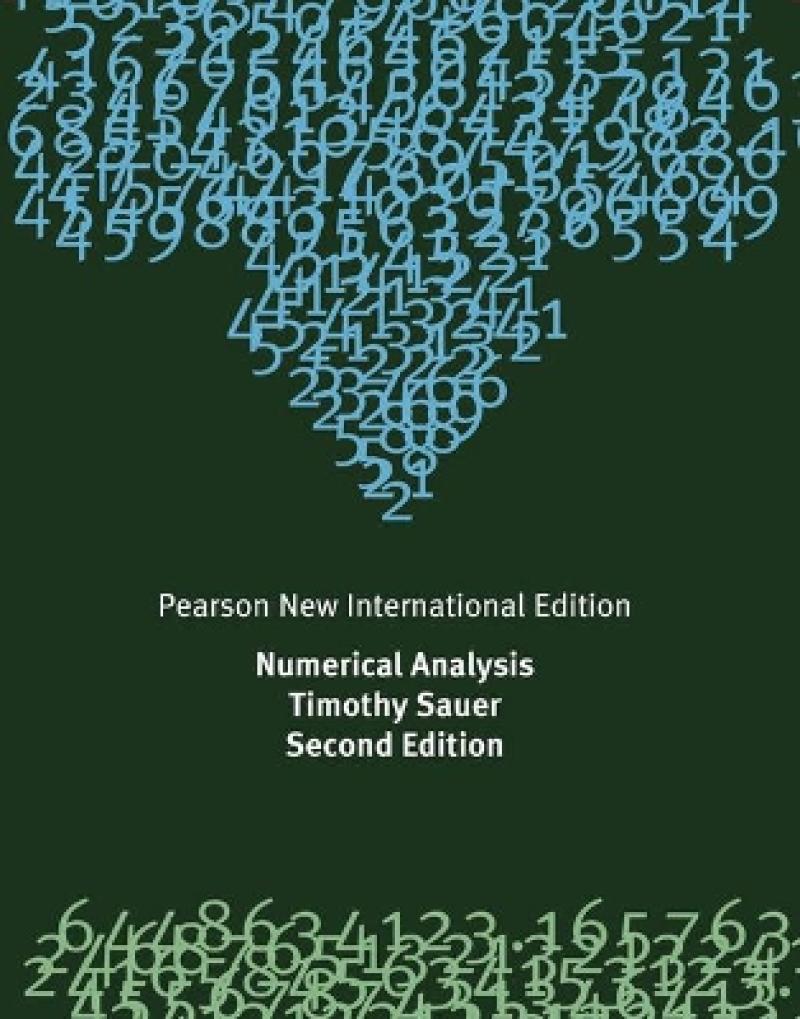Numerical Analysis, Second Edition, is a modern and readable text. This book covers not only the standard topics but also some more advanced numerical methods being used by computational scientists and engineers—topics such as compression, forward and backward error analysis, and iterative methods of solving equations—all while maintaining a level of discussion appropriate for undergraduates. Each chapter contains a Reality Check, which is an extended exploration of relevant application areas that can launch individual or team projects. MATLAB® is used throughout to demonstrate and implement numerical methods. The Second Edition features many noteworthy improvements based on feedback from users, such as new coverage of Cholesky factorization, GMRES methods, and nonlinear PDEs.
- Preface
- 1. Solving Equations
- 2. Systems of Equations
- 3. Interpolation
- 4. Least Squares
- 5. Numerical Differentiation and Integration
- 6. Ordinary Differential Equations
- 7. Boundary Value Problems
- 8. Partial Differential Equations
- 9. Random Numbers and Applications
- 10. Trigonometric Interpolation and the FFT
- 11. Compression
- 12. Eigenvalues and Singular Values
- References
- Chapter 0 (optional) provides students with the fundamental building blocks they will need in later chapters. The entire text is designed to move from elementary ideas to more sophisticated concepts to avoid sudden jumps in level.
- Spotlights throughout the text highlight the five major ideas of numerical analysis—convergence, complexity, conditioning, compression, and orthogonality. These spotlights comment on the topic at hand and make informal connections to other expressions of the same concept elsewhere in the book, helping students synthesise new material with what they already know.
- Reality Checks appear in each chapter to provide extended examples of the way numerical methods lead to solutions of important technological problems, making the topics immediately relevant.
- MATLAB® expositions appear throughout the text, giving students and instructors guidance on using this important software tool.
- Appendix B is a short MATLAB tutorial that can be used as a first introduction to students who have not used MATLAB, or as a reference to students already familiar with the software.
- Coverage updates include:
- Chapter 2: Expansion of topics in the second half of the chapter. Cholesky factorization (section 2.6.2) is new, along with preconditioning techniques for iterative methods (section 2.6.4)
- Chapter 4: Added topics include the Modified Gram-Schmidt method (4.3.2), Levenberg-Marquardt optimization (4.5.3), and the GMRES method for solving linear systems (4.4).
- Chapter 8: New section 8.4 on nonlinear PDEs.
- MATLAB® code updates keep this text current with recent MATLAB changes.
- Improved exposition and examples throughout the text were based on feedback from reviewers and users.
- Significant content updates by section:
- 0.5: New figure illustrating the calculus refresher.
- 1.5: New example with figure on Failure of Newton Method.
- 2.6: Completely revised section on symmetric matrices; new subsection on Cholesky method; new subsection on Preconditioning.
- 2.7: Revised subsection on Broyden's Method.
- Reality Check 2: Completely revised with new emphasis on clamped-free beam, i.e. diving board.
- 3.2.2: New proof of Newton form of interpolating polynomial.
- 4.3: New figure for Gram-Schmidt orthogonalizaton.
- 4.3.2: New subsection on Modified Gram-Schmidt.
- 4.4: New section on GMRES method.
- 4.5.3: New subsection on Levenberg-Marquardt method.
- 8.1: Two added figures, new examples of reaction-diffusion equations
- 8.3: Revised bookkeeping system for 2-dimensional elliptic equations; revised Finite Element Method presentation with added figures.
- 8.4: New section on nonlinear PDEs.
- Appendix B: Updated MATLAB function handling, added description on making QuickTime files.
Produktdetaljer
Biografisk notat
Timothy Sauer earned his Ph.D. in mathematics at the University of California–Berkeley in 1982, and is currently a professor at George Mason University. He has published articles on a wide range of topics in applied mathematics, including dynamical systems, computational mathematics, and mathematical biology.
